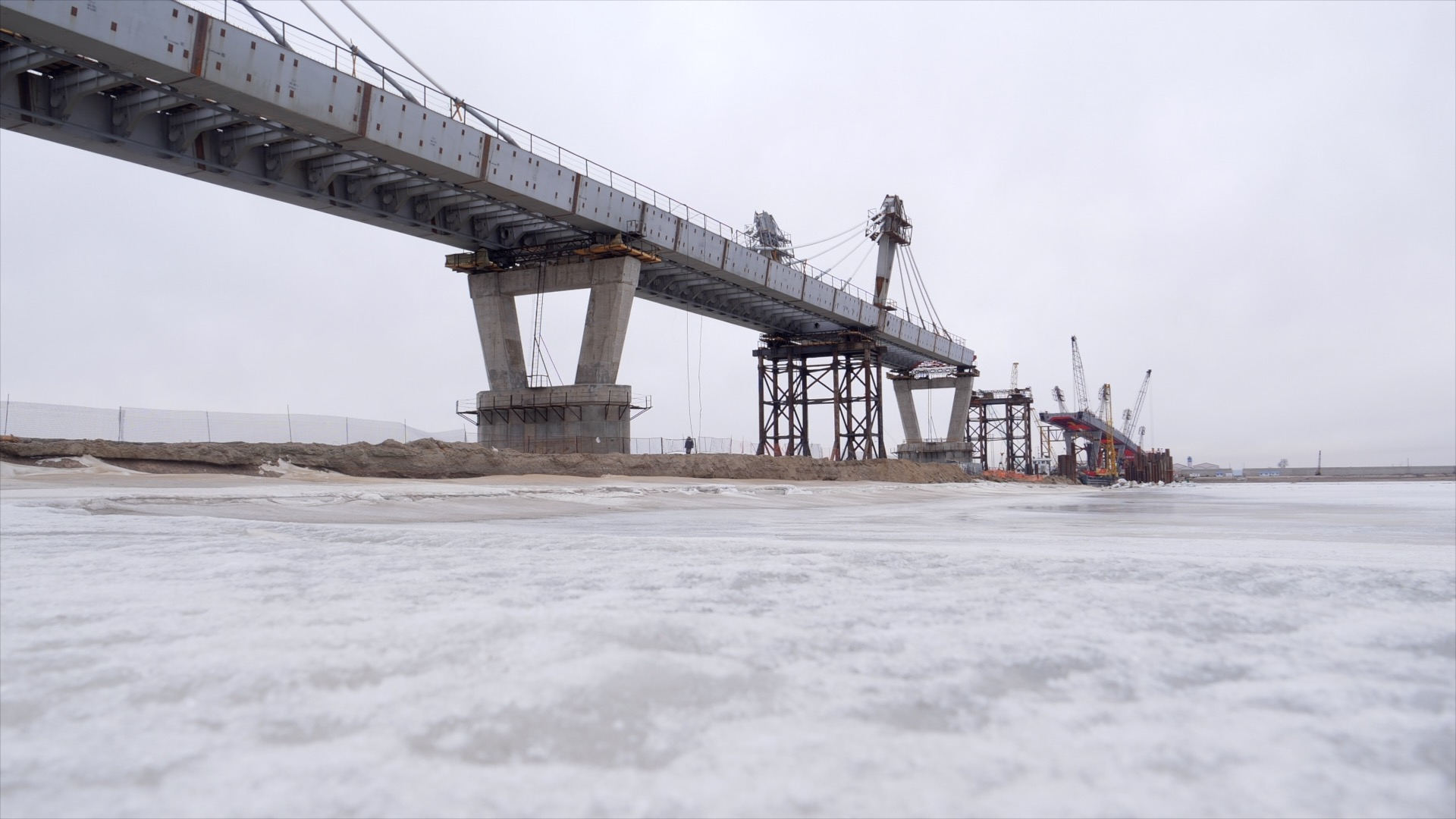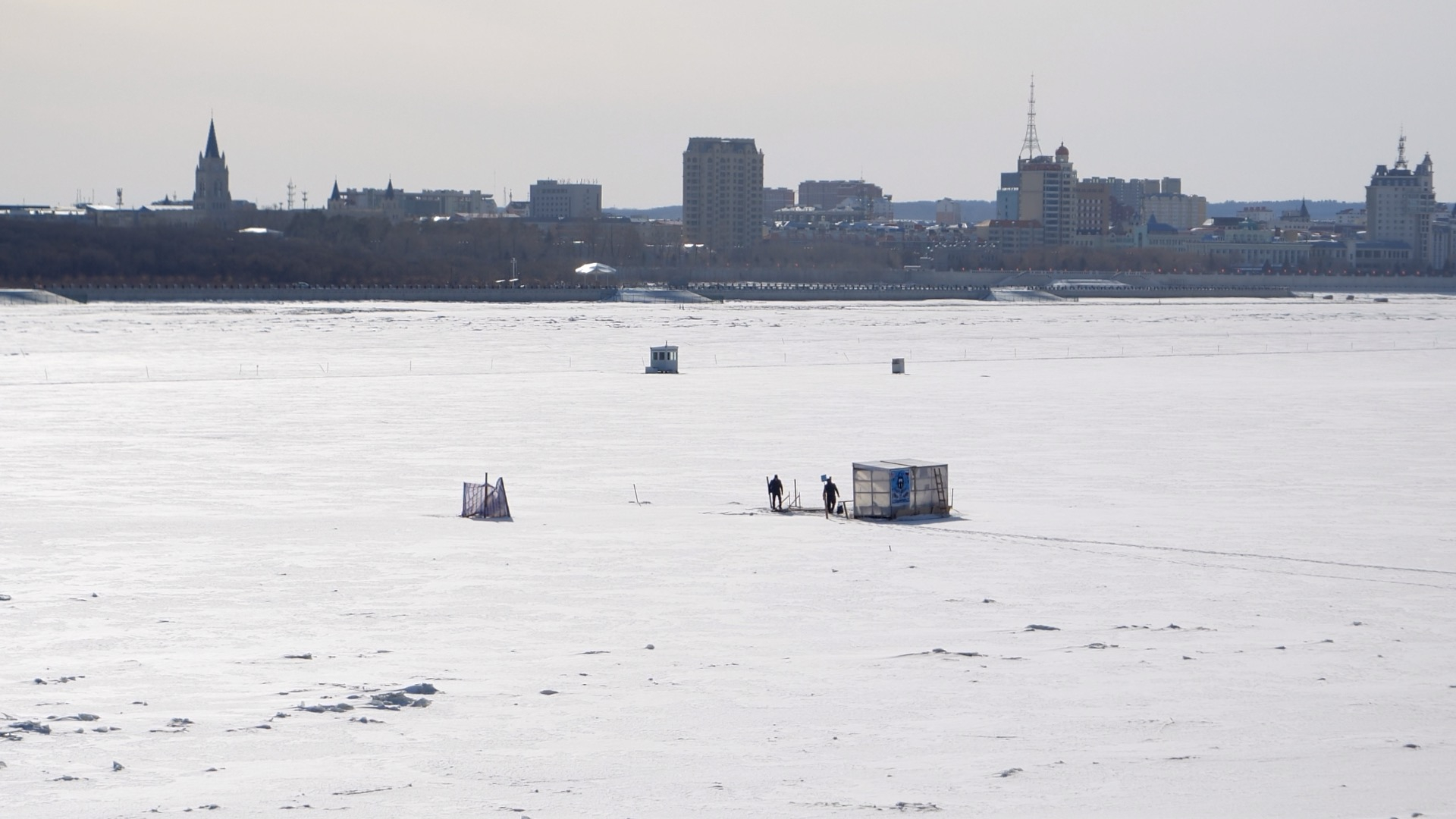
Culture
22:43, 24-Mar-2019
River that ain't going to stand between us any more
Updated
22:59, 24-Mar-2019
By Aljosa Milenkovic
03:19

The border between China and Russia spans over 4,200 kilometers, including the one-thousand-kilometer-long Amur River which has been there for over hundreds of years. Because of its unpredictable nature and harsh weather conditions, it has always remained an impassable obstacle for closer ties between the two nations along the border.
Now, for the first time in history, the Amur, also known as the Heilongjiang River in China, will be traversed by not one, but two bridges that will connect the two friendly countries.
Both bridges are being constructed in the Russian Far East, and will increase cross-border exchange of goods to millions of tons.
Freezing cold continues to grip Russia's Amur region. It is one of the most scarcely populated areas in the country with only 800,000 people living in the 360,000-square-kilometer territory.

Russian fishermen at the Russian side of the frozen Amur River, with China's Heihe City in the backdrop, March 20, 2019. /CGTN Photo
Russian fishermen at the Russian side of the frozen Amur River, with China's Heihe City in the backdrop, March 20, 2019. /CGTN Photo
The region's economy is struggling and its people are forced to move to other areas in search for a better life. Cross-border trade with China is seen as one of the ways out of this situation, yet lack of any reliable transport link has hampered any serious business.
Just opposite Blagoveshchensk, across the frozen Amur River, is the Chinese city of Heihe. Two million people live there. For ages, Blagoveshchensk and Heihe have been so close, and yet so far away. But now, things are about to change.
The change for better
The bridge over the Heilongjiang River, just outside of Blagoveshchensk, has entered its final stages of construction. It is over a kilometer long with almost 20 kilometers of roads, out of which 13.5 kilometers are on the Russian side.

Nikolay Rogov, chief construction engineer, looks at the Amur River from the Blagoveshchensk Bridge, March 19, 2019. /CGTN Photo
Nikolay Rogov, chief construction engineer, looks at the Amur River from the Blagoveshchensk Bridge, March 19, 2019. /CGTN Photo
The bridge cost a total of over 330 million U.S. dollars, with the Russian part costing 250 million U.S. dollars, and the Chinese side over 82 million U.S. dollars. Each country is building its own part of the bridge and adjacent roads. The two parts of the bridge will meet in the middle of the river, right at the border. However, severe weather conditions have postponed the joining of the bridges until May.
"Rivers like Amur sometimes pose serious challenges. This year specifically is the situation with very thick ice. That's why we'll have to wait for the icebreaker to pass here and only then we can continue with connecting both sides of the bridge, Chinese and Russian," said Nikolay Rogov, the chief construction engineer of the Blagoveshchensk Bridge.
It took two decades of negotiations between the two countries, until the construction finally began at the end of 2016. Rogov said they would finish all their work by December 2019, and the bridge would be ready for use. Something local and regional businesses in Blagoveshchensk are eagerly awaiting.
Valentina Kalita, the mayor of Blagoveshchensk, didn't hide her joy either.

Valentina Kalita, the mayor of Blagoveshchensk, speaks to CGTN. March 20, 2019. /CGTN Photo
Valentina Kalita, the mayor of Blagoveshchensk, speaks to CGTN. March 20, 2019. /CGTN Photo
"They'll have more opportunities, and transporting capabilities will be more stable throughout the year. We are connected now, but that link depends on the season of the year. There are times when the Amur rises and transportation between our two countries becomes difficult," said Kalita.
"The bridge will be open all year without interruptions and our businessmen will not have to face troubles any more."
At the moment, people and products are crossing the Heilongjiang River via a pontoon bridge, when the river is frozen. With the arrival of thaw, all traffic will be halted until the ice fully melts, for nearly three months. But that's about to become a distant past, as the eagerly awaited bridge brings promises of not just better transportation, but of more jobs and better lives.
(Cover: A view of the Amur Bridge from the Russian side, March 19, 2019. /CGTN Photo)

SITEMAP
Copyright © 2018 CGTN. Beijing ICP prepared NO.16065310-3
Copyright © 2018 CGTN. Beijing ICP prepared NO.16065310-3